French butter: why is it so delicious?
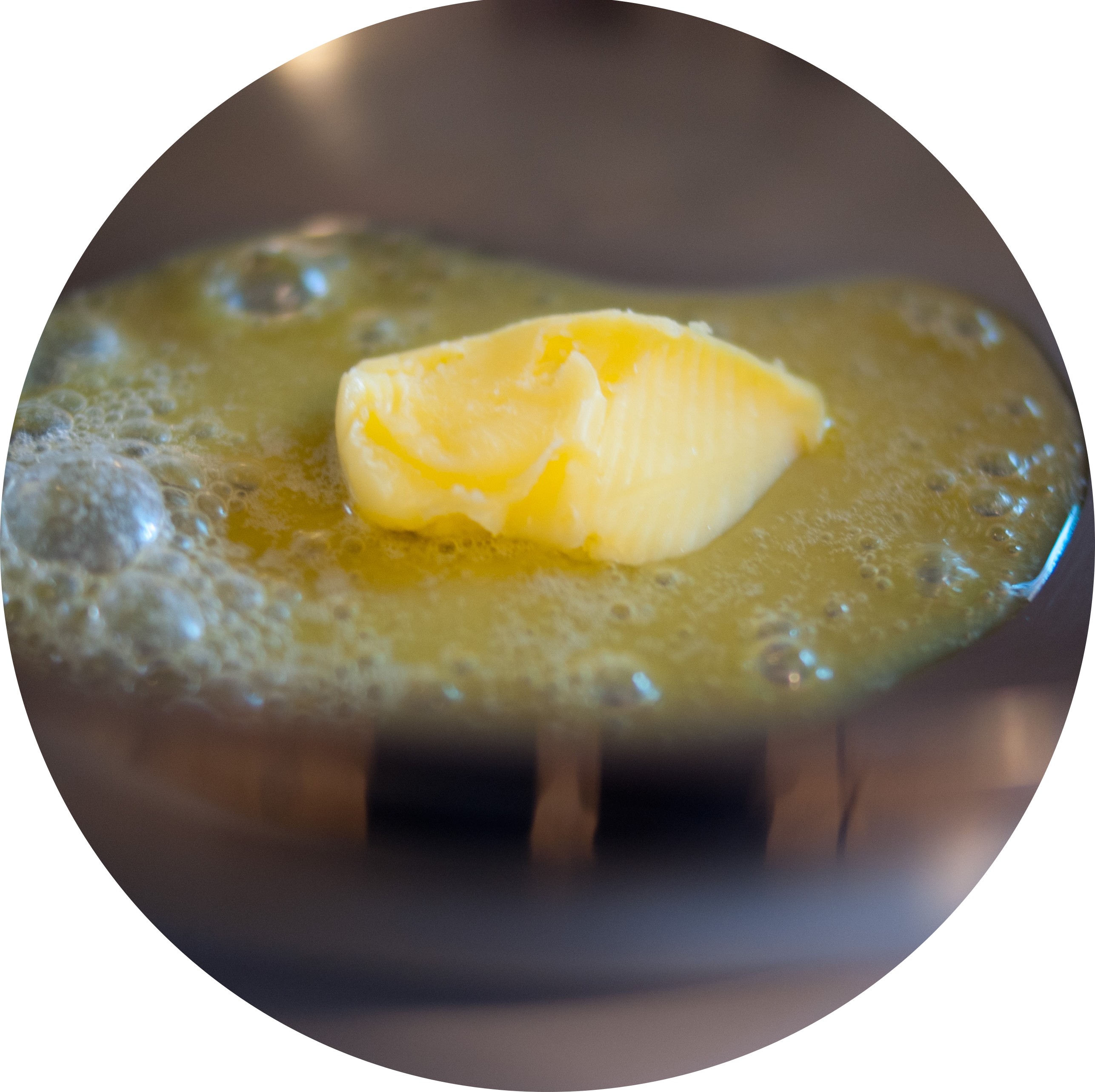 The French are the world’s most prolific butter eaters. Unafraid of fat, they’ll spread butter thickly onto bread, rub it into pastry and even drop a slice onto warm vegetables.
The French are the world’s most prolific butter eaters. Unafraid of fat, they’ll spread butter thickly onto bread, rub it into pastry and even drop a slice onto warm vegetables.
Producers of the famous Isigny Sainte-Mere butter from Normandy lovingly describe it as “yellow like buttercups, with a faint taste of hazelnuts”.
People come from far and wide to sample French butter. So what does French butter have that others do not?
The high fat counts plays a significant role. European butter contains around 87% fat whereas American butter is just 80%. Australian butter comprises at least 80% milk fat. In the UK butter varies between 80% and 83%. The legal minimum in France is 82% fat – but the real secret to French butter is the process of culturing.
What is culturing?
Culturing is a process most commonly used in France, which means that the cream from the milk is left to ferment before it is churned. By introducing bacteria to the cream, the sugars are converted to lactic acid, giving it a sourer and ‘buttery’ taste. This culturing is what makes French butter so irresistible.
French butter the traditional way
Until the mid-1900s when butter was produced locally on small farms, the cream was left to separate from the milk naturally. The milk would be left in large pans until the cream floated to the top, then it would then be skimmed off and stored in a cool place.
Yellow like buttercups, with a faint taste of hazelnuts.
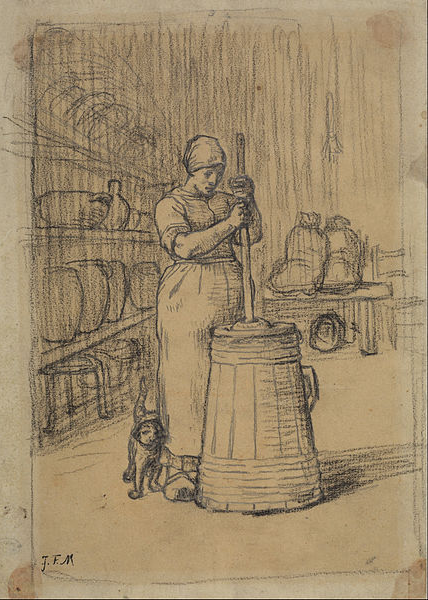 Producers would let the cream accumulate until there was enough to begin churning. Because there was no refrigeration, the cream would be cultured by the bacteria that formed over a period of a couple of days. It is this process of culturing that gave the butter a more ripened taste, and what makes artisanal butter so delicious. However, small producers have become less common as a result of industrialisation.
Producers would let the cream accumulate until there was enough to begin churning. Because there was no refrigeration, the cream would be cultured by the bacteria that formed over a period of a couple of days. It is this process of culturing that gave the butter a more ripened taste, and what makes artisanal butter so delicious. However, small producers have become less common as a result of industrialisation.
In today’s butter-making industry, the cream is separated from the milk using separators spinning at 30 000 RPM (rotations per minute). In France a lactic acid-producing culture is added to the cream, which ferments overnight. This cultured butter has a full, almost nutty flavour which is more likely to be found in Europe than the US. Sweet cream butter dominates the US market, which is made with pasteurized, uncultured cream.
Artisan butter-makers use the cream of whole milk to produce a creamy, full-fat butter, but some industrial producers make their butter by extracting small amounts of cream from whey, the liquid that remains after milk has been curdled and strained. This butter has a tangy, almost cheesy flavour and a lower fat content.
Make French butter at home
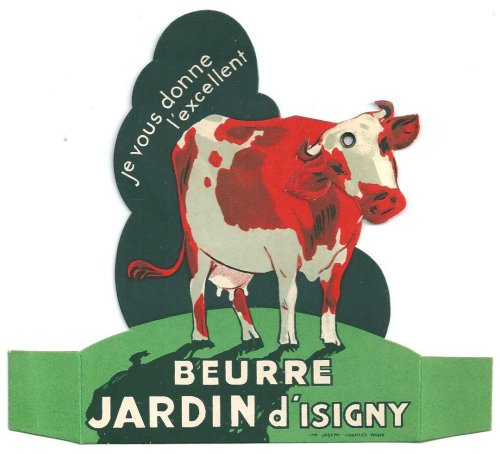 Nothing can be better than home-made, non-industrial beurre. You can make your own cultured butter using an organic, high fat cream from pastured cows and a dairy-friendly culture.
Nothing can be better than home-made, non-industrial beurre. You can make your own cultured butter using an organic, high fat cream from pastured cows and a dairy-friendly culture.
Simply blend your cream, add the culture and let it rest at 68-70°F for six to 12 hours, depending on how ripe you would like your butter to be. Separate the butter using a blender or a jar before rinsing and kneading it.
Here you can find detailed instructions on how to make better butter in your own kitchen.
Although countries like Britain produce some delicious butter, I think we can all agree that French butter is simply the best. The French have such respect and love for food that they refuse to skip an important step (such as culturing) when producing their butter. Quality, not quantity, is the key here and the French dedication to the art of butter-making is evident in the final buttery product.
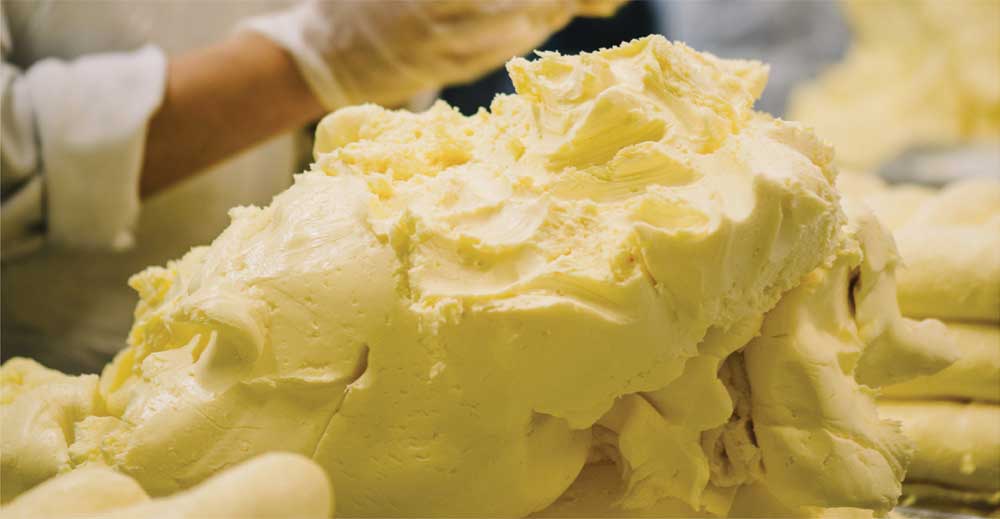
Have you ever made your own butter? Which French butter is your favourite? Let us know in the comments below!
Image credits:
1. Melting butter by Taryn, via Flickr
2. Elle & Vire advertisement, via Didier Butter
3. Bretel Frères advertisement, via Didier Butter
4. Nothing replaces butter booklet, via Didier Butter
5. Study for woman churning butter by Jean-Françoise Millet, via wikimedia commons
6. Beurre jardin d’isigny advertisement, via Didier Butter
7. Cultured butter, via Pepesaya.com.au
8. (Feature image) Mound of Butter by Antoine Vollon, via wikipedia
Note: This article was published in 2016 and has been refreshed and republished due to its popularity.

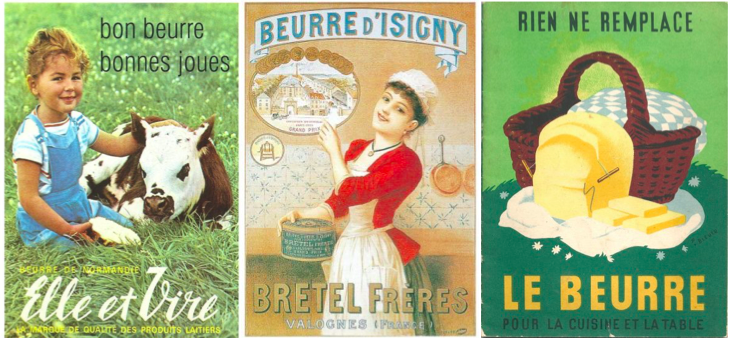






Bonjour Stephanie,
Your informative article on butter made really interesting reading.
With your knowledge of the subject, I hope you can enlighten me on the following:
Why is it so rare to find butter on the table in France—or does this culinary custom only apply down here in Gascony where I live? Anglo Saxon friends find it quite strange and will invariably ask for butter to spread on the bread they have with their meals—even (quelle horreur) when eating cheese.
The only time we’re served butter in the southwest is when one orders ham—it invariably comes with a knob of butter—which seems even more strange than having none at all.
Amicalement.
Ray
Good questions Ray!
We need a French local to answer that – Let’s see who’ll help us…
Bonjour Ray
Jacqueline has responded to your butter questions below – you may not have seen it 😉
Bonjour Ray,
I might be the French native who could come up with a possible answer concerning the use of butter in France. First of all, bread is too much appreciated and put on a pedestal in France for adding taste to it. Bread and butter while eating salad, or a stew, is unthinkable. Also, butter is more used in agricultural regions with farms and cows. As I am from the South of France, as a child I hardly knew butter. We would make fun of people from Normandy or Brittany who would cook with butter rather than olive oil and on top of that salted! it is ‘la cuisine au beurre’ versus ‘la cuisine à l’huile’. Butter is used for breakfasts, spread on toast in the morning with jam, for certain sauces too (béchamel) and of course for the famous sandwich ‘jambon-beurre’; normally not during a meal unless one is too much influenced by anglo-saxon habits!
So if I am buying butter in France, is it all cultured? That is, they don’t need to label it as cultured because that is the norm, as opposed to the USA, where cultured butter is the exception?